Today we resume our tour of EU sheep and wool and find ourselves in Slovakia – The Slovak Republic – where the word for sheep is ovce and the word for wool is vlna. These words feel familiar; ovce is also the word for sheep in the Czech Republic and ovca is used in Bulgaria and in Croatia. Relatedly, the sheep breeds we’re discussing today are regional variants of the same breeds we’ve seen elsewhere – the Cigája (called Tsigai in Romanian); and the Pôvodná valaška (Native Wallachian sheep, called Walachian in Romania and Valachian in the Czech Republic).
These words and breeds in common speak to shifting political borders and to the fact that types of sheep can belong to a particular type of landscape or to a group of people far more readily than they can be contained within National boundaries. One of the things we have learnt through working on this EU tour for Wovember Words is how much easier it is to contain specific sheep breeds to a country when that country is an island. Where countries aren’t defined by oceans that sheep can’t cross, and when neighboring countries share mountain regions and semi-nomadic pastoral traditions, certain sheep breeds become “native” to several countries at once.
Pôvodná valaška (Native Wallachian sheep)
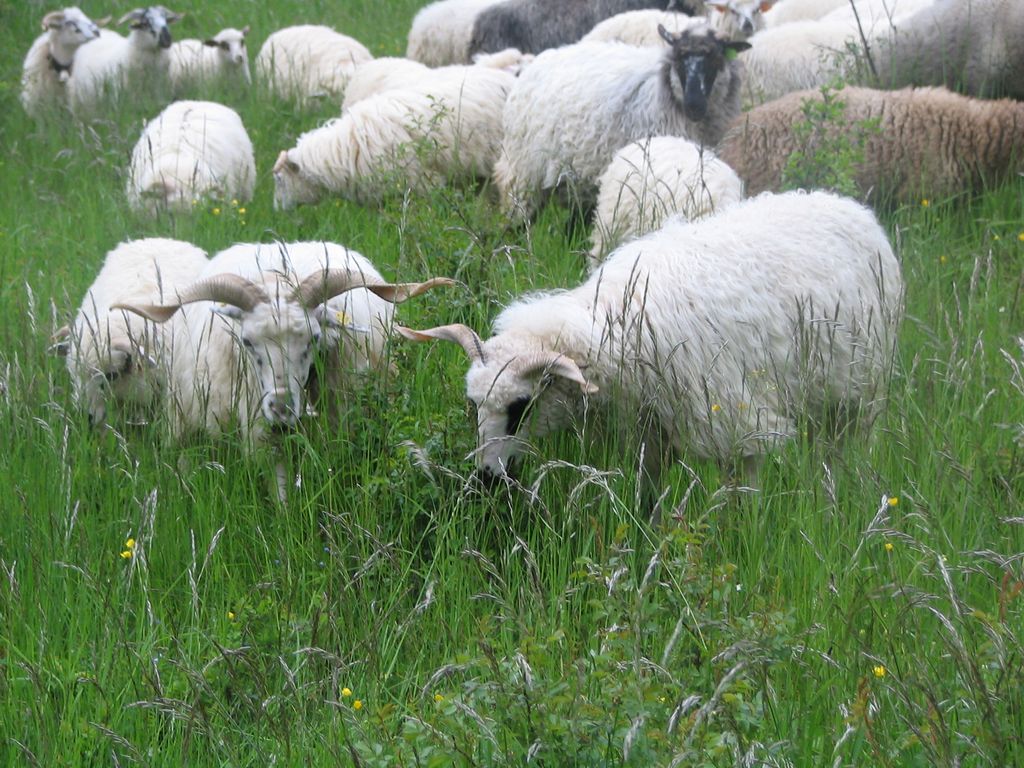
From what we can surmise the Native Wallachian sheep of Slovakia and its comrades in the Czech Republic and in Romania all share common roots in historic Moravian Wallachia and in the transhumant Eastern Romance-speaking peoples of the Balkans and Eastern Europe historically known as the Vlachs. This region and these peoples are inexorably bound up with a history of shepherding.
From Wikipedia:
Moravian Wallachia (Czech: Valašsko) is a mountainous region located in the easternmost part of Moravia, Czech Republic, near the Slovakian border, roughly centered on the cities Vsetín, Valašské Meziříčí and Rožnov pod Radhoštěm. The name Wallachia used to be applied to all the highlands of Moravia and neighboring Silesia, although in the 19th century a smaller area came to be defined as ethno-cultural Moravian Wallachia. The traditional dialect (rarely heard these days) represents a mixture of elements from the Czech and Slovak languages, and has a distinct lexicon of Romanian and Balkan origin relating to the pastoral economy of the highlands.
The name comes from the exonym of the Romanian shepherd migrants (see Vlachs), who advanced along the Carpathian range between the 14th and 17th centuries. Romanian linguist Eugen Lozovan wrote that Vlach immigration in Moravia and South Poland started in the tenth century. On their way they gradually lost their original language with the exception of some Romanian words they use in their Czech and Slovak dialect, but they preserved much of their culture (especially folklore, songs and costumes) and economic base, namely sheep breeding.
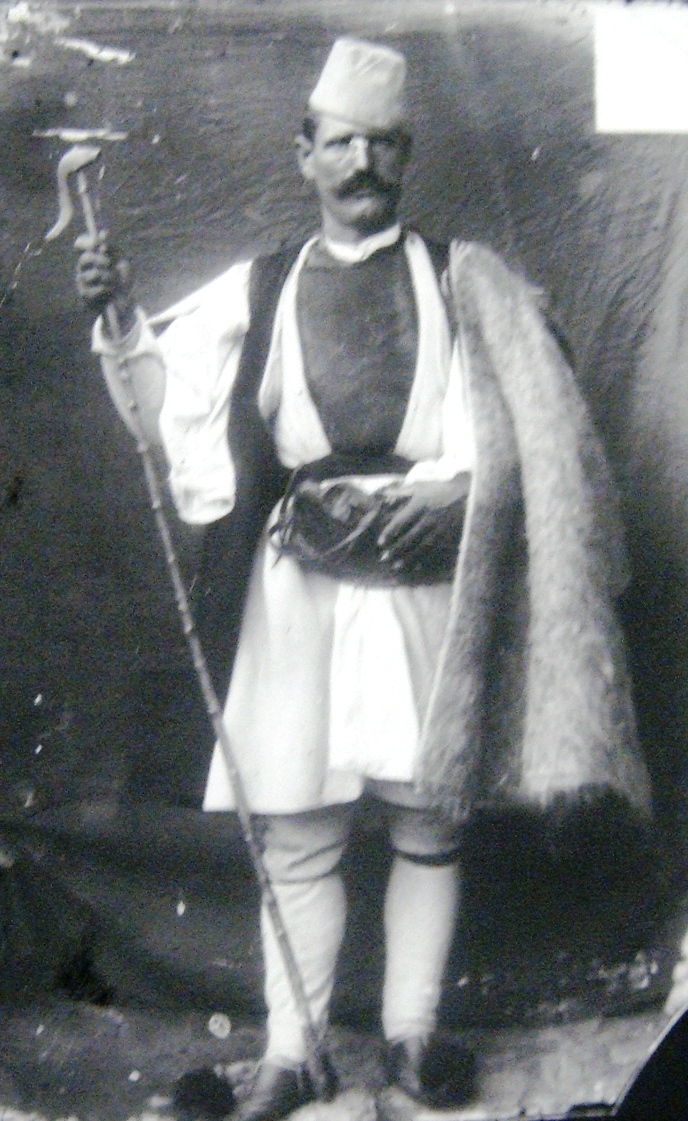
Due to the association of Vlachs and sheep-herding, since the Middle Ages their ethnonym has come to mean “shepherd” in many Balkan and Central European languages. During the Middle Ages, many Vlachs were shepherds who drove their flocks through the mountains of southeastern Europe. Vlach shepherds reached as far north as southern Poland (Podhale) and the eastern Czech Republic (Moravia) by following the Carpathians, the Dinaric Alps in the west, the Pindus Mountains in the south and the Caucasus Mountains in the east. Vlachs have been called “the perfect Balkan citizens” because they are “able to preserve their culture without resorting to war or politics, violence or dishonesty.”
The Native Wallachian sheep of Slovakia, Romania and the Czech Republic share a common history of transhumant shepherding systems and the mountaineous terrain of the Carpathians.

However a 1997 report by Margetín, M. introduces a newer, derivative breed: the Improved Wallachian sheep:
The Improved Valachian breed is the most represented sheep breed (approximately 42 percent out of the total number of sheep kept in Slovakia). The proportion of the Tsigai breed is approximately 38 percent, the Merino type comprises 19 percent, and other breeds together make up approximately one percent. All Tsigai and Valachian sheep in Slovakia are milked and some of the Merino sheep are milked, too. The lowest decrease in number was noticed in the Valachian sheep, and greater interest in specialized milk and meat breeds is expected.
Though the spelling is different, cross-referencing this with other texts shows that Valachian/Wallachian are variants of the same breed name. According to this source the improved variety gradually displaced the original breed, becoming the dominant sheep in Slovakia. German sheep breeders preserved the breed – at one point the majority of Wallachian sheep were in Germany – and animals purchased from these flocks were used to reconstitute the breed in the Czech Republic. A project to revive the original Wallachian sheep breed as a genetic reserve in Slovakia began in 1992 and now the indigenous population is growing again. This company – Granella are “dedicated to the breeding of sheep and especially the native valaška (Wallachian) sheep”.
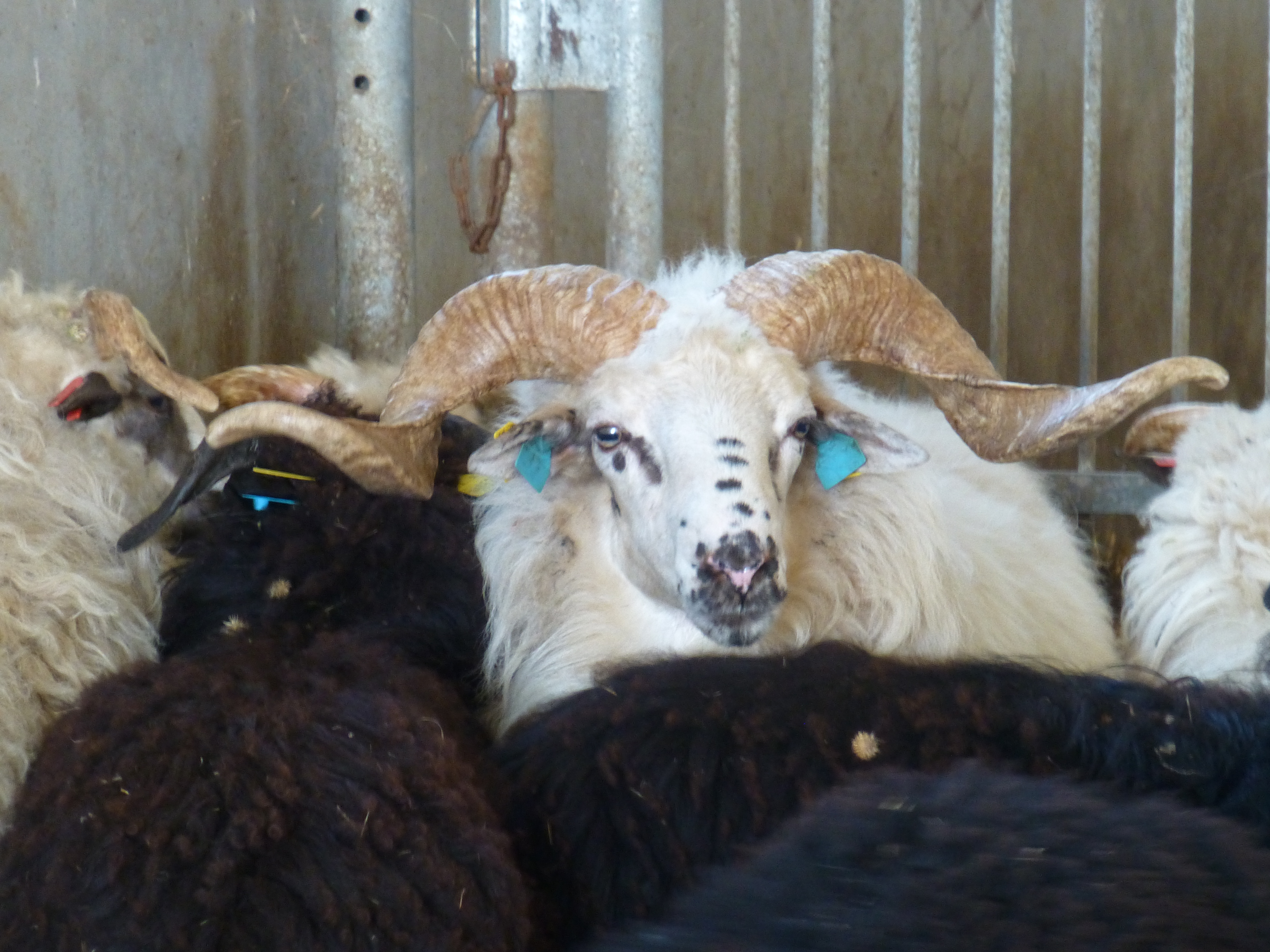
We couldn’t find any information about specific uses for the wool from Wallachian sheep (either native or improved varieties) but this description is really interesting, suggesting that this a dual-coated breed with a soft downy undercoat as well as a sturdy outerfleece designed to handle the weather and the temperatures of its mountainous home:
Wool sheep breeds valaška is rough, range D / E, E, E / F and F (40.1 to 86 microns), mixed as it is composed of several types of hair (an undercoat, outer guard hairs, and kemp). Each of these fibres has a different histological structure (core and structure) and is of a different thickness and length. Valaška is a mixed-wool sheep [does this mean the same as dual-coated?]. Having different fibre types in the fleece causes huge variations in crimp and staple length, but there is also variety in fibre quality according to where it is found on the sheep’s body.
We would love to hear from anyone who is working with the wool from this or the Tsigai sheep!
The Tsigai sheep – Cigája in Slovak – has a long history that spans the histories of several countries. From Wikipedia:
The breed originates from Asia Minor. It came to Hungary at the end of the 18th century through Balkans and Romania, these former Hungarian names prove the fact: Zombori sheep, Oláh sheep but they called it berke too (nowadays they call it Cigája). Its name originates from the Romanian þigáie word. It has become widely spread because people bred it for three different things: its flesh, its milk and its soft wool. Lots of Transylvanian farmers changed their ordinary sheep to Tsigai, because people bought its wool much more. Although it was a mountain sheep it adapted to lowlands really fast. Most of the Tsigais were kept between the Danube and the Tisza, and this is where they remained breed them after the I. World War too. In Hungary it’s not an endangered species but they are living in small stocks. In Moldova it is the leading breed of sheep, and it is also important in Romania and Slovakia.
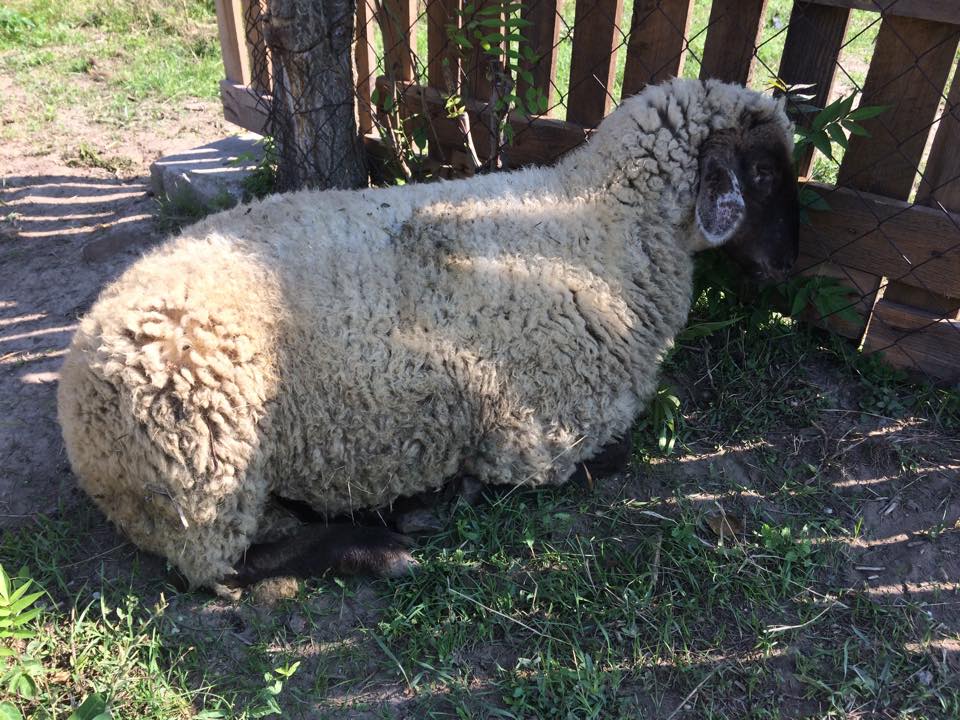
In spite of the wool of the Tsigai sheep being soft, the wool industry in Slovakia – as in so many other EU countries that we have been reading about for this Wovember Words series – is very peripheral to the overall sheep economy of Slovakia. From the 1997 report by Margetín, M.:
The proportion of funds from the sale of slaughter lambs represents approximately 80 percent, from the sale of slaughter sheep approximately 8 percent, and from the sale of wool approximately 5 percent; the rest are mainly sheep kept for breeding and are the type without milk production…
…Production and sale of sheep wool is only of peripheral importance from the viewpoint of the economy of breeding. Receipts from the sale of wool from one sheep very often do not cover the costs of its shearing… more than 1,000 tonnes of greasy wool are produced in Slovakia (1146 tonnes in 1996), statistically recorded sales comprise approximately one-half (629 tonnes in 1996; it does not include the sale of wool from small-scale producers). The import over export in foreign trade still prevails with sheep wool in Slovakia. It is estimated that there will be 2,600 tonnes imported and 2,000 tonnes of sheep wool exported in 1997…
…The import of wool to Slovakia is dominated by Australia (83.8 percent production), then New Zealand, the Czech Republic, Hungary, Russia and so forth. The wool is imported to Slovakia without customs restrictions.
Sheep wool was exported during the first six months of 1997 to the Czech Republic in the first place, with 39.8 percent, 33.6 percent to Germany, 13.6 percent to Hungary, etc. The average purchasing prices of sheep wool paid to sheep breeders were within US$0.70–0.75/kg during the last four to five years. The price of imported and exported wool is markedly higher and it will be necessary to take measures to protect the home producers.
We struggled to find examples of any native wool products in Slovakia, but we did find one yarn shop online selling handspun Slovak wool described as Ručne pradená vlna.
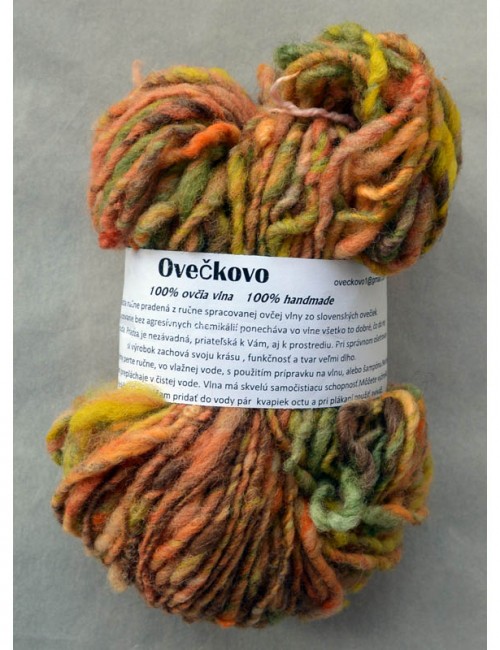
We also found this company which has been in operation since 1991, and which is producing a massive range of home furnishing textile products and garments. Their website says “We help traditional sheep-farming… and are constantly looking for new ways of processing raw materials, but especially wool, thereby helping to preserve the traditional sheep-farming in Slovakia”.
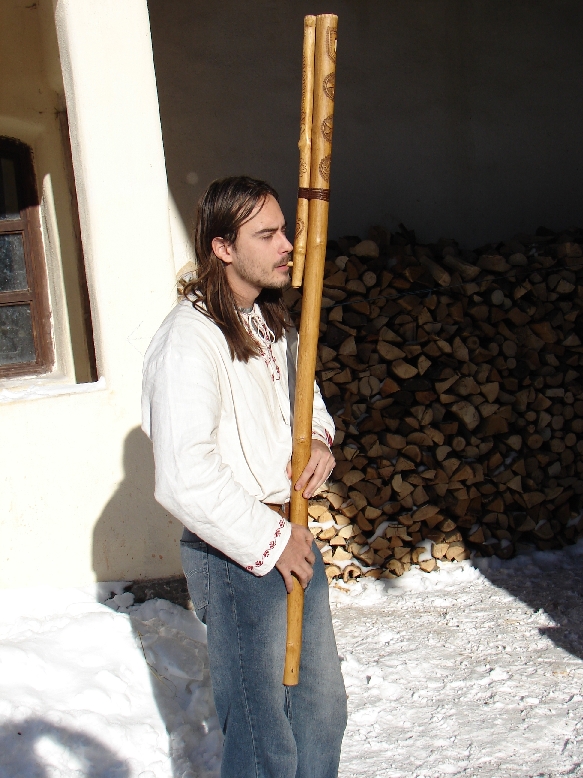
Finally in Slovakia we were delighted to discover the amazing traditional shepherd’s flute, the Fujara:
Traditionally, the fujara was played by shepherds for recreation. Today, the fujara has moved from the shepherds’ fields to the stage of folk festivals in the Slovak towns of Východná and Detva. The instrument has also left Slovakia and is played all over the world; particularly by aficionados of native flutes in Western Europe and North America. Despite this, the Fujara has yet to gain popularity or much recognition outside of Slovakia. Most often the fujara is a solo instrument, but ensembles of two or three fujaras have been known to exist, such as the Kubinec family or the Javorová Húžva trio.
The fujara was proclaimed in the UNESCO list of Masterpieces of the Oral and Intangible Heritage of Humanity in 2005. “The Fujara and its Music” was inscribed on the Representative List of the Intangible Cultural Heritage of Humanity in 2008 by UNESCO.
The music of this instrument is beautiful, and one of our happiest discoveries while researching this post was the discovery of many videos featuring sheep bells and Fujara – a symphony of folk culture and a celebration of the coexistence of shepherds and sheep, in sound.
We hope you have enjoyed this stop in Slovakia and would love to hear from you if you have extra information to add to the post. Likewise, if anything here is factually please help us and everyone reading this by letting us know in the comments.
